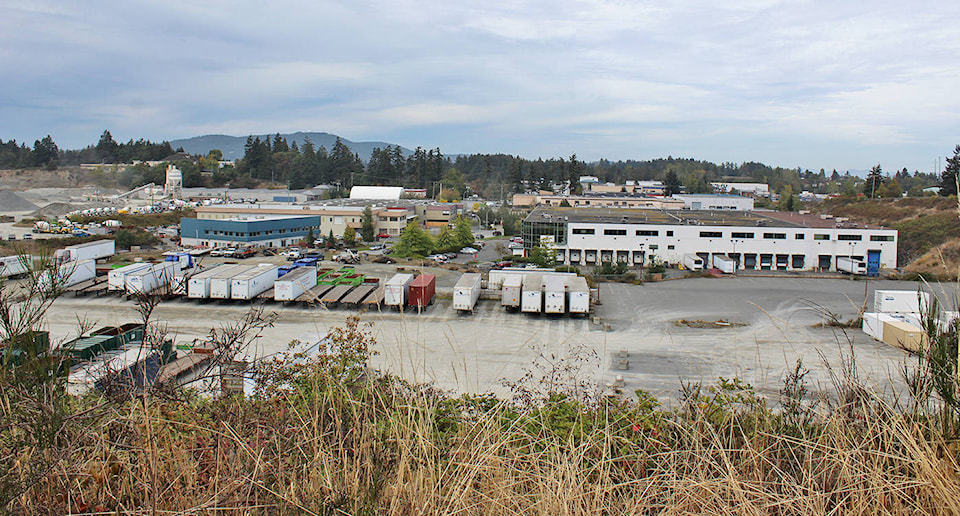A medium growth plan, expected to create some 3,400 jobs in Central Saanich’s Keating Business District over 25 years, now must be implemented if anything is going to change.
Gerry Devine with consulting firm Stantec, says with earlier work complete on a business case for the area, all that’s left is to create road map to reach the end goal. And there’s where their implementation plan comes in. Devine, at a recent meeting of District council, presented items that Stantec believes should be part of a Keating Business District implementation plan.
“It all comes after some earlier work,” he said, adding the business case worked to analyze three potential growth scenarios: low, medium and high.
They concluded that the medium growth scenario was the preferred option for the next 25 years. The implementation plan, he said, moves ahead to provide a road map for implementing that medium growth scenario.
“It identifies the action for the Keating Business District to undertake through policy regulation studies and capital projects.”
Some of the initiatives he listed include Highway 17 transportation planning, A West Keating local area plan, future marketing opportunities, Official Community Plan (OCP) development permit update streetscape guidelines and more.
Devine said the crux of the Highway 17 plan is for the District to share with the Ministry of Transportation and Infrastructure the reports on the future of Keating Cross Road. Following that, he said, a traffic study is expected, which would be required to correlate the path of demand with the medium growth strategy.
Councillor Bob Thompson said in terms of the parking and the cash in lieu (one of the initiatives), he did a little research from Bowen Island, who has a cash in lieu bylaw.
“So for example, if you get a variance on parking spots, there’s a fee for parking spots. That is something I think you might want to look at…” said Thompson.
Councillor Alicia Holman wanted more detail on the meetings that occurred with BC Transit and the Ministry of Transportation.
Devine said he couldn’t speak about BC Transit, as he doesn’t believe there have been any meetings on this topic, but spoke briefly on a meeting with the Ministry.
“We do need to do the traffic study that will correlate the changes and demand with the medium growth scenario …” said Devine.
Holman said if only five or 20 per cent of those jobs or workers came to Central Saanich, it would be a regional benefit.
“There’s an argument, and I know this came up at the public meeting, where some of the landowners were saying that they didn’t want the District to spend any money in terms of making this plan, that they would see that the District could respond to landowners requests for bringing forward proposals and letting the market decide …” said Holman.
Devine said within an estimated $6.3 million price tag on some of the items in the implementation plan, $2 million would be for later phases of work done by potential developers — who would be expected to foot much of the bill — leaving around $4 million as a District cost.
“I think what’s important here is that the low growth strategy was consistent with the OCP, (and) generate I believe about 1,400 jobs, not to full build out from 25 years,” said Holman.
Saanich resident Pam Harrison, representing a group called Livable Roads for Rural Saanich, spoke about her concerns. She said the group represents citizens who are concerned about the impact of traffic on their rural roads. Harrison said they are not opposed to development at the Keating Corridor and would benefit from many of those commerces.
“We’re well aware that development up at Keating Corridor is just one piece of a very complex traffic puzzle, fueled by strong growth in Langford and other places, commuter pressures and a lack of a robust live work policy,” she said, adding that they feel the livability is compromised through excessive speed, truck traffic and aggressive driving.
The District referred Stantec’s Implementation Plan to stakeholders, including Livable Roads for Saanich, for 45 days.
The District will also look at further engaging with the Ministry of Transportation and Infrastructure on the selection of a preferred concept solution for an interchange at Highway 17 and Keating Cross Road.
They will also request an opportunity to present the Keating Business District Implementation Plan and background Business Case report to the Minister.
